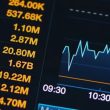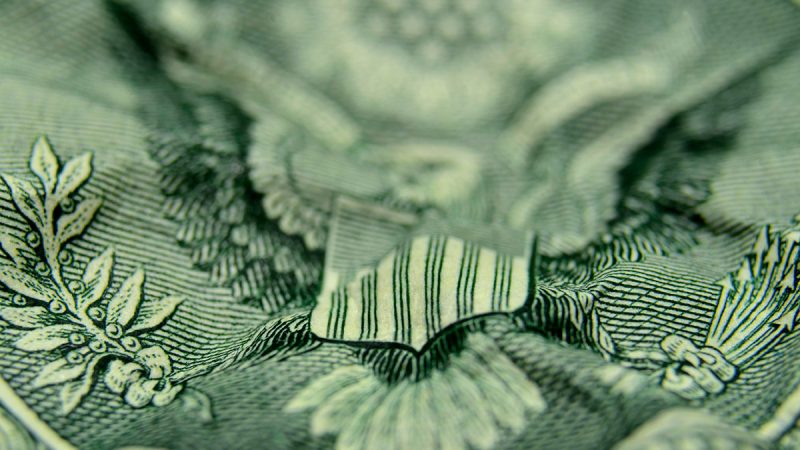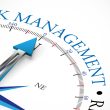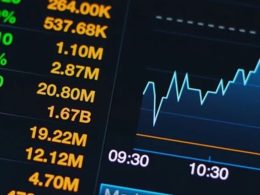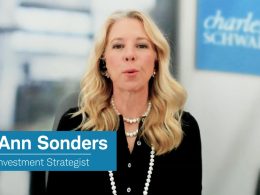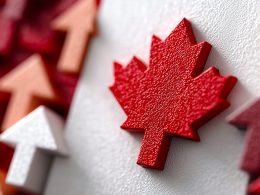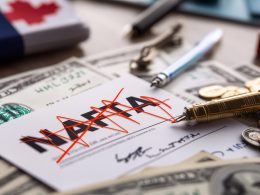by Hubert Marleau, Market Economist, Palos Management
April 18, 2025
Last week, I wrote: “Trump said that he was not looking at the market, while Powell said that he was not about to offer imminent relief. This is pure nonsense. Everyone looks at the market and no one wants to take the blame for a self-inflicted recession. Someone will then capitulate on a whim as pressure mounts from industry, pointing to the ultimate tariff rate, supply chains and spending plans; and from consumers, pointing to prices, quality and supply of goods. This is why I believe the US will only keep the 10% tariff rate permanently for all goods entering the U.S. as payment for global military protection, while reciprocal tariffs and specific tariffs will be amended through negotiation. I also believe that the USMCA trade agreement will stay intact for good measure, but that high tariff rates on Chinese goods will remain - perhaps 50%. That's how I think things will develop in order to avoid a catastrophe. Acknowledging the individuality of reciprocal tariffs would lead to a long series of laborious bilateral negotiations with hundreds of countries, which would complicate hopes for a quick recovery, Wall Street reacted with unprecedented anger. Jamie Dimon, CEO of JPMorgan, and Bill Ackman. CEO of Pershing Square, warned of considerable turbulence if a quick resolution to tariffs fails; the US Chamber of Commerce has manifested its opposition to tariffs; the Association of Independent Businesses expressed its disfavour with Trump’s trade policy; and the vicious unwinding of US Treasuries created a liquidity crunch in the capital-constrained broker-dealer network as foreign investors and entities dumped their holdings of U.S. Treasuries. In a matter of just a few days the DXY fell 5.0%, yields on the 10-year Treasuries rose almost 100 bps and the S&P 500 tumbled 13.5%, forcing a tune change on tariffs from “Rock to Torch”.
The US Has no Divine Right Says Jamie Dimon
The U.S. does not have a divine right to success: this fact has put in question America's long standing role as the world’s leading market.
It may be a blip, but based on Trump’s apparent willingness to pause some of his tariffs, and by demonstrating that he is attuned to the scruples of the capital markets, it is indeed possible that peak uncertainty has already passed. There is a large contingency of market strategists who are of the view that market and industry will keep on pushing and prodding the Administration until Trump finally capitulates and essentially reverses the whole thing, other than the basic 10% tariff rate on the whole world except Canada and Mexico. China, however, will definitely not be so lucky.
In this regard, Bloomberg's index of trade-policy uncertainty has started to decline. While this is great, concerns remain that the American brand has nevertheless been tarnished. Indeed, America’s international reputation has already been seriously damaged, and the resilience of the American economy considerably undermined. Big foreign customers of Treasuries, who currently hold about a third of this $30 trillion market, could accelerate their selling, wanting less of what America actually exports the most:US debt. This is bound to increase US Treasury term premia, thereby raising borrowing costs for US taxpayers more than they ought to. The sharp devaluation of the US dollar so far this year is an indication that global money managers at margin might be losing some confidence in the U.S. as a place to invest and trade. Incidentally, the real rate on 10-year Treasuries has risen 50 bps since April 2 to 2.28% under a deteriorating economic outlook, suggesting that the entire rise was caused by term premium. US officials are undoubtedly worried about this situational risk reaction, and have initiated discussions with money market banks for a rule change to increase the capacity of the bond market to handle large-volume days during periods of stress.
The point is that the Americans do not have a divine right to success anymore than the Spartans, the Romans, the French, the Dutch, the Spanish, the Mongolians, the Ottomans or the British believe they had at one time.
The Economic Slowdown
First, in a period of just 3 months, economists who responded to a Wall Street Journal’s quarterly survey dramatically slashed their growth forecasts and seriously raised them for inflation for 2025, increasing their estimated probability of recession in the next 12 months to 45% from 22% in January, blaming Trump’s erratic behavior on tariffs.The Federal Reserve of N.Y. reported that unemployment expectations are at the highest level since April 2020. Given the unprecedented breadth and magnitude of Trump tariffs, precision about their full impact on the economy is impossible; nonetheless, economic research, industry realities and anecdotal evidence continue to paint a pessimistic picture. Goldman Sachs estimates that a 10% tariff rate across the board would increase manufacturing jobs by 100,000, but drag down overall employment by fully 500,000. The Atlanta Fed has a -2.2% contraction estimate for Q1, while the reputable Peterson Institute for International Economics conjectures that the economy will not grow in 2025 at all, blaming the disruptive effect of tariffs on prices, supply chains, real income and international trade. Based on tariff measures presently in place, the WTO reduced its own world trade growth estimate for 2025 from 3.0% to minus 0.2%, but it could be as low as -1.5% if Trump decided to re-introduce the full rates of his broader tariffs.
Xi’s Anti-Tariff Tour
Second, by making trade with the U.S. more expensive, Donald Trump has created a powerful incentive for the rest of the world to form closer ties with China, and for those countries to strike non-tariff deals between themselves. In a recent poll, the Singapore-based Yusuf Isaak Institute found that, for the first time ever, a slim majority of the region’s people would ally with China
over the U.S. if they were forced to choose. In this connection, Xi launched a charm offensive in Southeast Asia, signing dozens of new economic agreements with Vietnam, and hopefully with Cambodia and Malaysia. To fight a trade war against China would be impossible to win because it is a formidable foe with immense resources like manufacturing heft, abundant labour and a vast supply of minerals. The U.S., meanwhile, would need many allies, according to most foreign policy experts, which may be tougher now to accomplish, given that Trump has antagonised them all. Unnecessarily concessions might be the only viable path to a coalition under such strictures.
The Decline of “Soft Power”
“Soft Power” is a persuasive approach to international relations, typically involving the use of financial, economic or cultural influence. The hallmark of US soft power is not quantifiable, but everybody knows it exists and that it can make things happen for the benefit of everyone. Soft power is what won the Cold War for America. Trump’s foreign policy is dismantling this beacon of freedom and the scaffolding of American soft power that took decades to build by squandering US global influence and goodwill, ceding power to authoritative regimes, ending Radio Free Europe/RadioLiberty and USAID, deporting people illegally, allowing Russia and China to fill the vacuum, insulting allies, indiscriminately taxing importers and blocking exporters, escalating tension within industry, and challenging the Fed’s independence. These actions have collectively damaged the social construct wherein the world believed in the myth that the US was indeed exceptional when it came to the status of the mighty dollar, promotion of freedom, and protection of the monetary, economic and geopolitical order. Should this whole edifice collapse, confidence will erode to zero and lead the globe into a tripolar world, which would dangerously and intensively compete for resources to keep its independence. The point is that it is not out of the question that nobody will trust the US not to may have overplayed its hand in foreign defense and trade policies, to the point where the rest of the world may have decided that it is no longer to be trusted.
Milton Friedman on Free Trade
Fred Langan reminded me of the Landon Lecture about free trade that Milton Friedman gave in Kansas on April 2, 1978. Fred extracted 2 paragraphs that summarised his assessment of tariffs:
“The political reason for tariffs is that the interests that press for protection are concentrated. The people who are harmed by protection are spread and diffused. Indeed the very language shows the political pressure. We call a tariff a protective measure. It does protect: it protects the consumer very well against one thing. It protects the consumer against low prices. And yet we call it protection.”
“What about the argument of unfair competition? What about the argument that the Japanese dump their goods below cost? As a consumer, all I can say is the more dumping the better. If the Japanese government is so ill-advised as to tax its taxpayers in order to send us, at below cost, TV sets and other things, why should we as a nation refuse to reverse foreign aid?”
The Tariff Saviour to Fix the Error
Thus, the only way to avoid the wrath of a rebellious world and a self-inflicted economic slowdown is for Trump to pivot toward postponing tariffs, while negotiating deals. Additionally, the Administration will need to give reassurances that it has competent economic managers, by not only being less disruptive, but by presenting defensible policies with the aim of pursuing tariffs that are actually reciprocal: what they do to us we do to them. According to Jamie Dimon, CEO of JPMorgan, Scott Bessent is the man in the Administration who should negotiate trade agreements: he’s the one who has a clear eye about what the Administration is trying to accomplish, which is fair trading practices, and the wisdom to engage with Beijing. The US has economic prosperity, rule of law, and the military strength to fix this before its too late to repair. Unfortunately, however, the Republicans are not likely to buck Trump. Bloomberg says that there are 2 reasons for this. Some actually support what he’s doing because he’s doing what he said he would, while others may disagree with ‘the how’, but not the agenda itself.
There is an elegant way out of this mess that would save face. Arthur Laffer, a Republican supporter, had a quote in the WSJ worthy of consideration. “Mr. Trump should give a globally televised address announcing to the world that the U.S. is ready to drop its tariff and industry subsidies to zero tomorrow on any nation that does the same. This would be the ultimate reciprocal tariff policy. President Trump and the U.S. would regain the moral high ground in trade disputes; and it would be enlightening to see which supposedly “free trade” nations accept Mr. Trump's challenge. Who better to pull off what could then become the greatest Art of the Deal negotiation in world history? It would restore a free, fair and unfettered global trading system. Everyone, everywhere would get richer. The American economy would be great again. And Donald Trump would win the 2025 Nobel Peace Prize.”
So What Went On Last Week
Over the weekend, President Trump announced tariff temporary exemptions for a number of electronic consumer products like smartphones, laptops and flatscreens plus numerous electronic items like hard drives, processors, and memory chips, under the “reciprocal tariff” scheme. The Barron calculated that it takes the tariff rate down considerably on about $385 billion worth of imports of which $100 billion come from China, accounting for 23% of US imports from that country. The President insisted that the 20% fentanyl-related tariff rate on Chinese exports stands. Meanwhile, President Xi put China on a wartime footing, ordering a diplomatic offensive aimed at encouraging other countries to push back US tariffs and restricting the export of 7 rare earths and related material across the defence, energy and automotive industries.
On Monday, the stock market took some solace even though President Trump mentioned that no one is off the hook when it comes to tariffs - ‘Many key and strategic industries must be protected for reasons of national security.’ Fortunately, news on inflation was good. The Federal Reserve Bank of New York reported that consumers' inflationary expectations rose to 3.6% in March, well below the 5.0% rate reported by the panicky Consumer Sentiment Index survey, which rose to 6.7%. The S&P 500 added another 0.8% from last week's rebound of 5.7%, but reached an ominous-sounding milestone, tallying a “death cross” - its first since March 2022. Technicians are of the opinion that a correction can metastasize into a deeper correction, albeit only for a very short while, when the 50-day moving average on the S&P 500 dips below its 200-day moving average. Take note that the DXY fell some more to 99.59, but so did bond yields - some normal behaviour for a change.
On Tuesday, the S&P 500 calmly snapped a 2-day bounce, falling only 0.2% to end at 5396 because there were no economic prints of any consequence.
On Wednesday, the market realised that nothing had truly been resolved and massive risk stemming from tariff uncertainty was still on. To the dislike of Trump, an inflation-wary Powell did not mince words, warning investors about the inflationary damage that tariffs could bring, opting to wait before mulling any interest-rate cuts and reasserting the Fed’s independence. Along with Nvidia, he threw gas on the chip fire, helping to push the S&P 500 down 2.2%.
On Thursday, the S&P 500 was essentially flat, up only 0.1%. For some strange reason Holy Thursday is historically good for equities.
After the Storm Comes the Calm
According to the Bof A’s fund manager survey, fund managers have quickly become pessimistic on US stocks: only 5% of them expect them to be the best-performing asset in 2025. They are now considerably underweight stocks, while cash held by them has surged. Their level of sentiment is the fifth lowest on record. What is scarier is the “extreme scenario” of total financial decoupling between the U.S. and China. Goldman Sachs believes that such an occurrence would force US investors to sell $800 billion of Chinese equities, representing around 7% of the market capitalization of Chinese companies and, in turn, inciting Chinese investors to unload their US financial assets, which amounts to $1.7 trillion, $370 billion of which are in equities and $1.3 trillion in bonds, which may partially explain why the term premia on US treasuries have risen so much of late.
This is, however, an unlikely outcome, given existing pressure from hedge fund traders and industrial CEOs. In other words, when the market raises the ante, Trump caves. It is perhaps why the Skew Index - a measure of perceived tail-risk - has steadily been falling over the past 7 days. Nonetheless, corporate bosses remain frozen by uncertainty and are reluctant to offer forward guidance, preventing investors from re- leveraging. Thus the S&P 500 is stuck in a trading range between 5250 and 5500 for the next while.
Copyright © Palos Management


